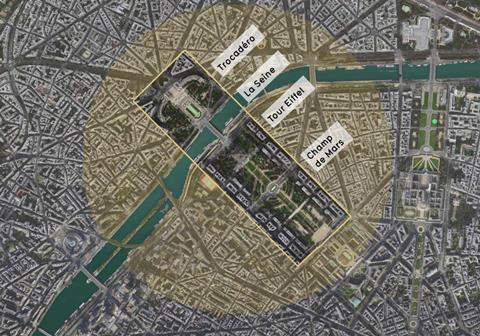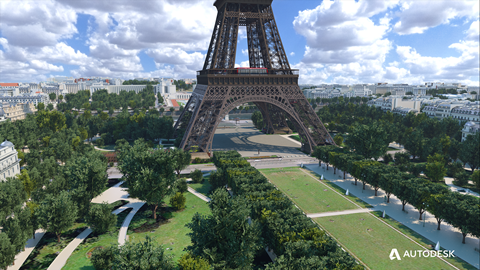Amanda Levete’s practice makes it to final four teams

A consortium led by AL_A is among four shortlisted teams for a major project to develop the area around the Eiffel Tower in Paris.
Amanda Levete’s practice worked with a group of engineers and consultants, including the LSE’s Ricky Burdett, on its entry for the high-profile design contest.
The group is one of four shortlisted consortia for the project from 42 entries, which is set to be awarded in 2019, with completion due for 2023, a year before the Paris 2024 Olympic Games begin.
Gustafson Porter & Bowman, Agence Ter and Koz Architectes are the other practices leading shortlisted teams.
Speaking at the shortlist’s unveiling at Paris City Hall on Friday, Jean-Francois Martins, vice-mayor in charge of sport, tourism and Olympic & Paralympic Games of the City of Paris, said that the winning team’s proposal would need to boost the pedestrian experience around the tower, as well as improving transportation in the surrounding area, including cars, buses and boats.

He said: “Six million people visit the structure [the Eiffel Tower] each year, but 20 million visit the general area, enjoying the view. Visitor satisfaction is not just about how long people wait for the lift: we need to bring more Parisiens back on site.”
Martins said that the development of the site, which covers 54 hectares either side of the River Seine, would boost the area for local people, as well as enhancing an “authentic” experience for tourists.
Deputy mayor of Paris Jean-Louis Missika described the project as a competitive dialogue, rather than a competition.

He said: “[It is] a major urban undertaking with an environmental aspect, to change landscaping, sightlines, mobility and architecture across the Trocadero, the River Seine, the large public park [surrounding the site], as well as the Eiffel Tower itself.”
Missika said that the four shortlisted teams were chosen not just for their individual skills, but also for their ability to work together on complex, technical issues.
He noted that architectural features “were not at stake here”, saying: “It’s a listed site which prohibits any new build in the immediate vicinity. We don’t want an architectural gesture, because we already have that. We need it to be modest.”
Amanda Levete said on Friday: ”The Tour Eiffel is a national symbol etched into a global consciousness and its iconography is understood across generations and cultures.”
The development will take into account safety concerns for visitors at one of the world’s major tourist attractions, as well as transport and pollution problems around the site.
Designs will also need to take into account the 2024 Olympic Games, with the beach volleyball tournament due to be hosted within the site’s boundary.
The City of Paris partnered with American software outfit Autodesk to create a detailed digital 3D site map of the tower and its surrounding area, supporting the selected teams with the development and visualisation of their designs. It was constructed using 10.3bn laser points, mapping more than 1,000 buildings across the area.
Visualisations of the proposed designs - which have yet to be drawn up by the four teams - will also be available to the public.













No comments yet